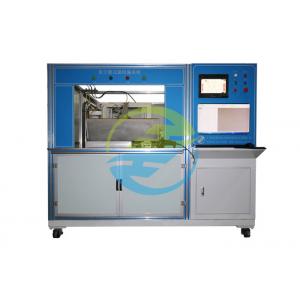
Add to Cart
Auto Parts Test Equipment Leak Test for EV Battery Cells With 1 Vacuum Chamber
Leak Test for EV Battery Cells Equipment basic function:
This equipment is a vacuum chamber helium leak detection system for the steel-cased battery cell, which mainly contains the processes of battery code scan, loading, evacuation, helium filling, helium leak inspection, and unloading. Then the helium signal in the leak detection chamber is detected by the helium leak detector, which can determine the leakage of the workpiece with high precision and rapid accuracy.
Challenges Leak Testing EV Batteries:
Billions of lithium-ion battery cells are manufactured every year for use in electric, hybrid-electric, autonomous vehicles, medical devices, and a variety of consumer electronics products. Most quality issues occur during battery-cell production, battery-module assembly, or battery-pack assembly and include:
leaks allowing humidity or water into the cell
leaks allowing electrolytes out of the cell
modules and housing integrity
Historically, pressure and visual test methods have been used for soft-pouch, cylindrical and prismatic cells, however, these methods can be slow, unreliable, and may miss small lithium-ion leaks that, if left undetected, can create big quality and safety problems.
Helium leak testing systems are also commonly used in the automotive manufacturing industry.
Parameter of Leak Test for EV Battery Cells Equipment:
| Alarm leak rate | 5E-5 mbar.l/sec |
| Number of testing stations | Single station |
| Number of vacuum chamber | 1 |
| Helium filling pressure | 0-0.5MPa |
| Gross leak detection method | Negative pressure detection of gross leaks |
| Production cycle | 34 seconds/piece |
| Product sealing method | Automatic |
| Loading and unloading products | Manual |
| Fixture | 2 sets |
